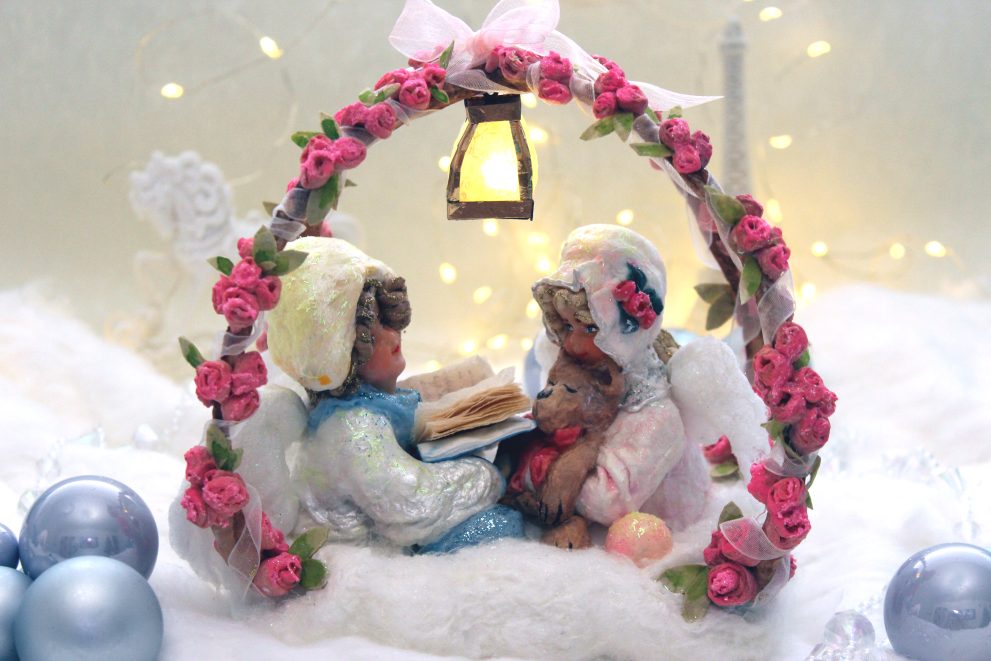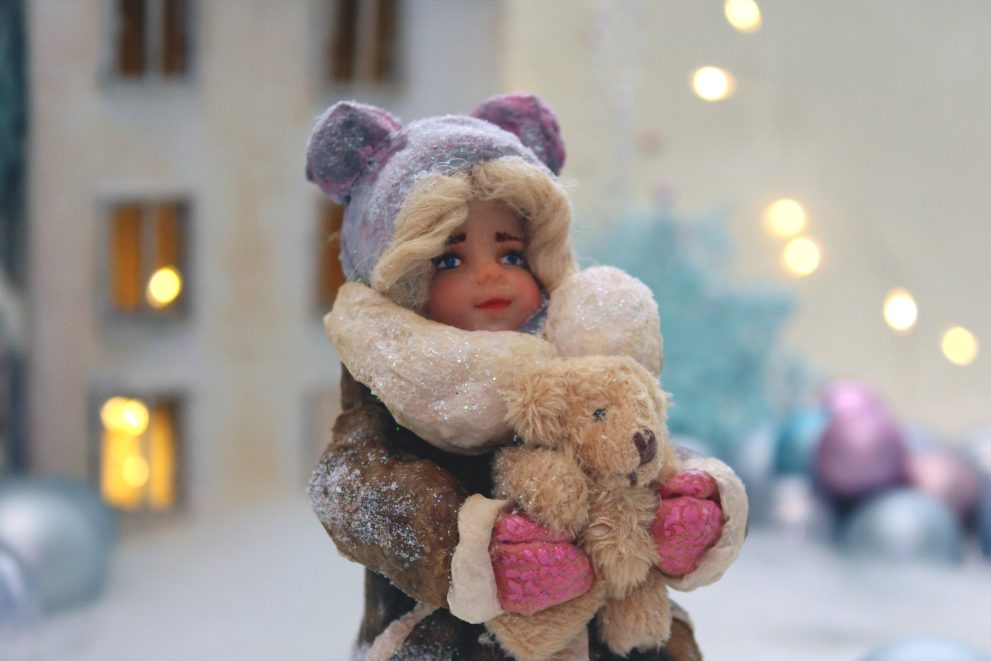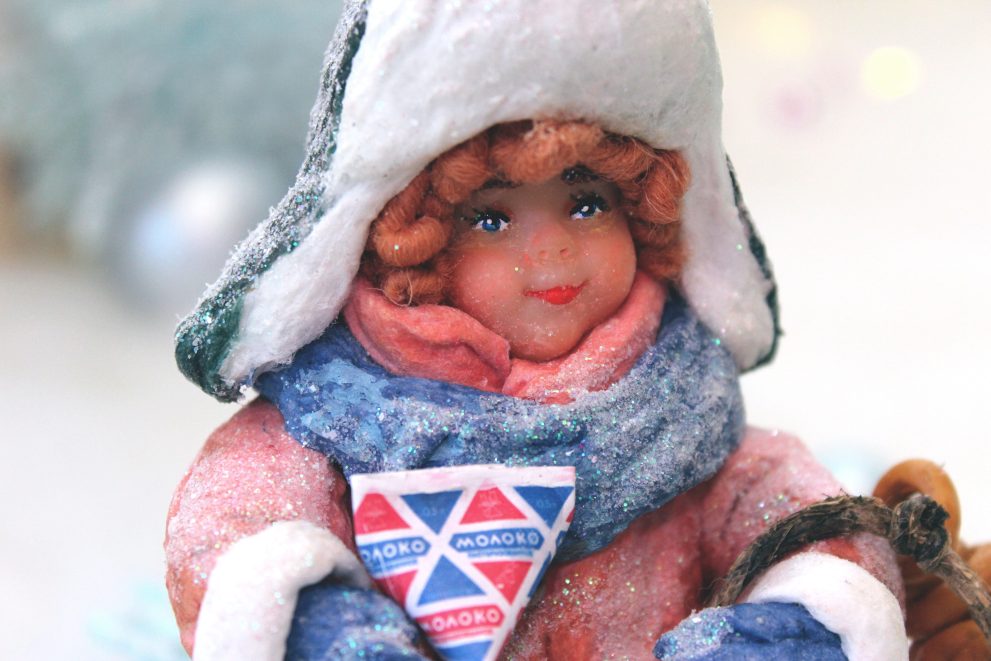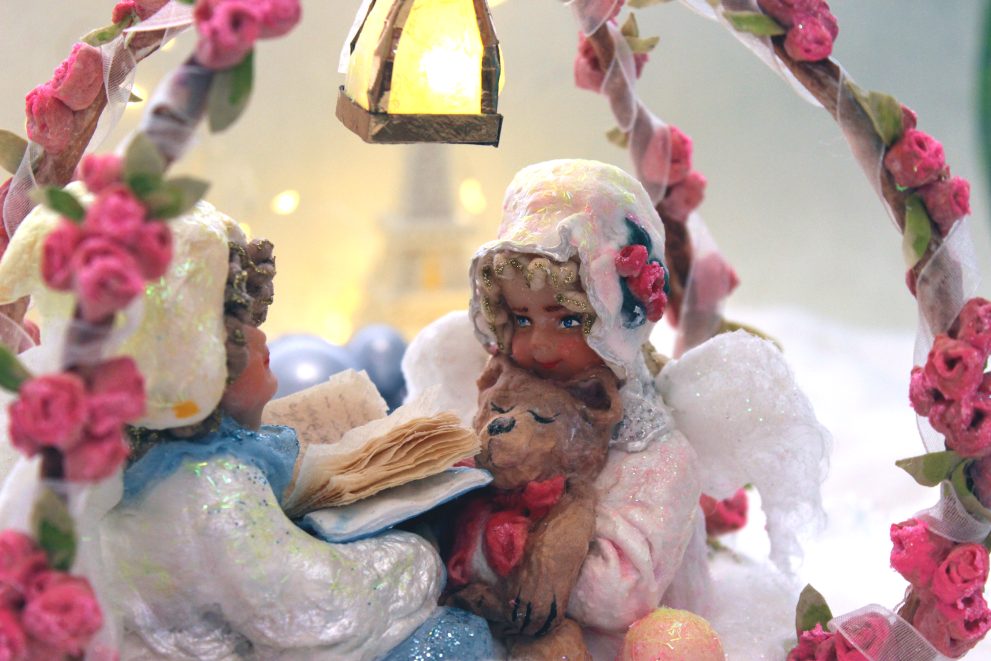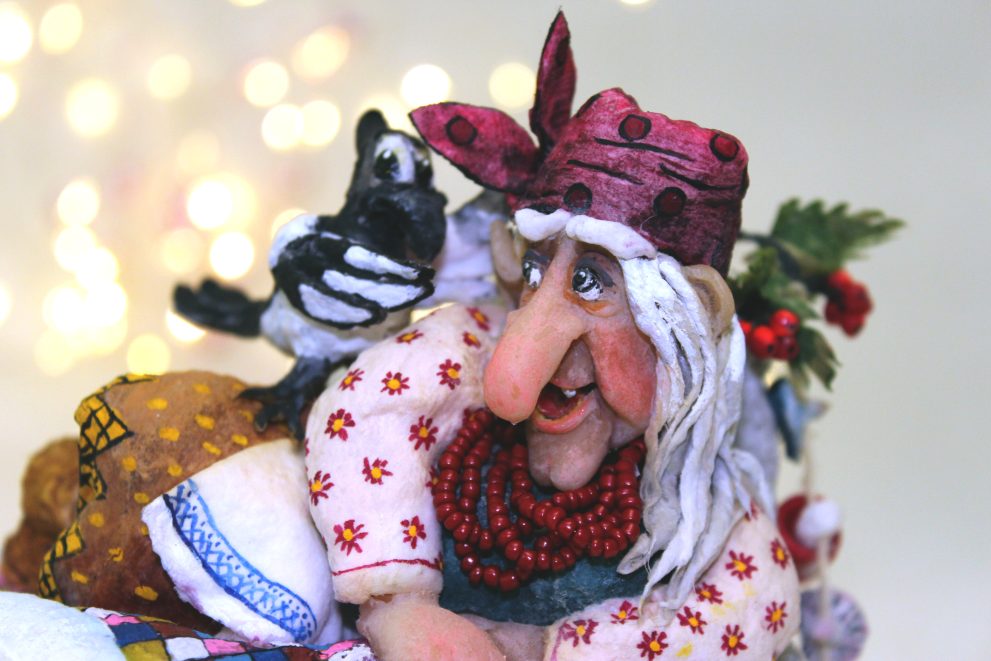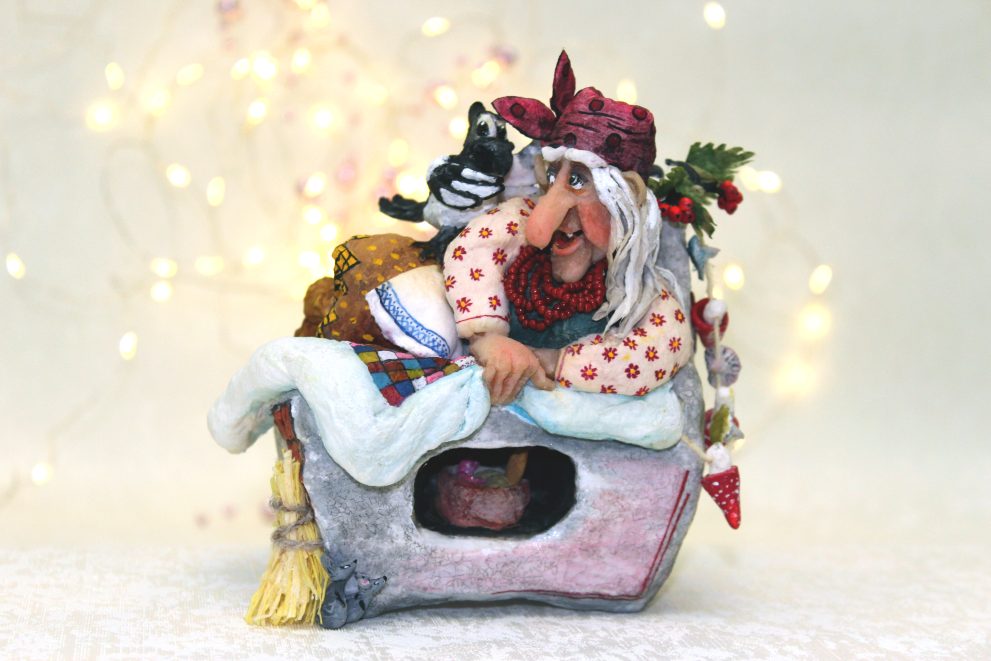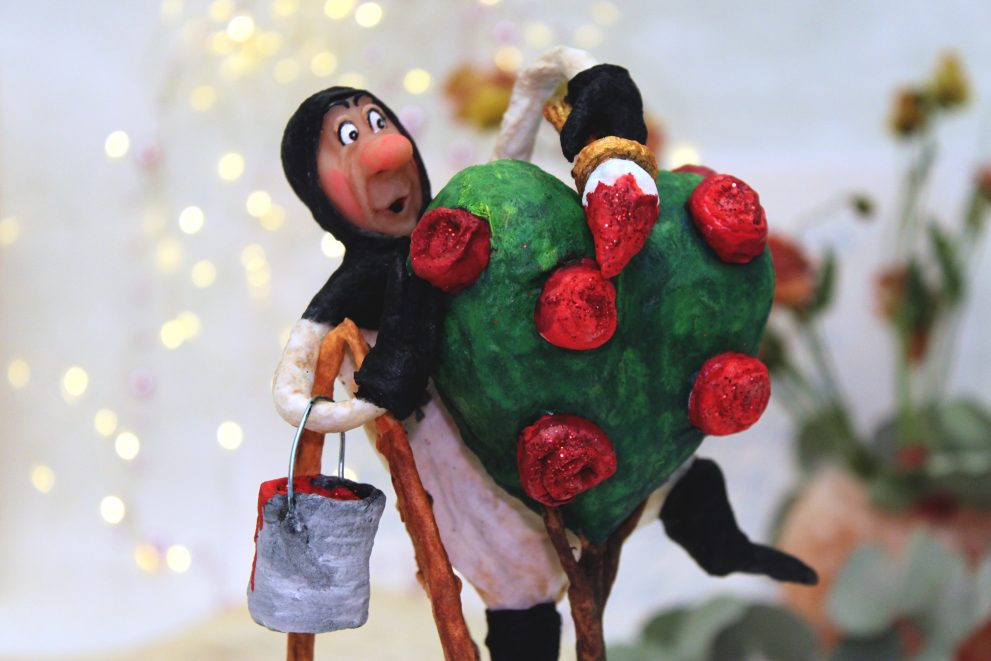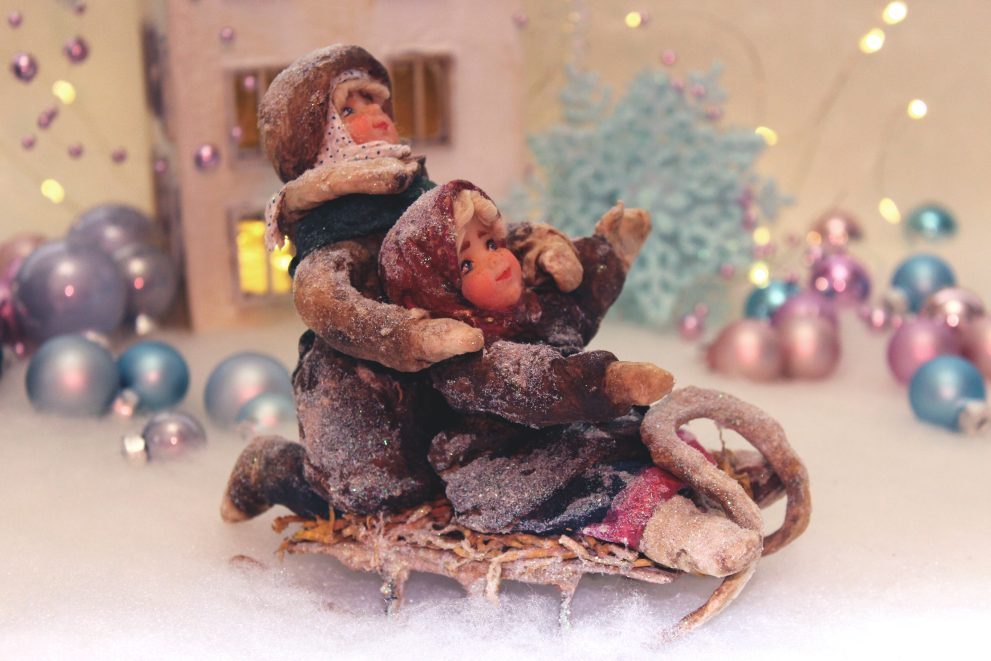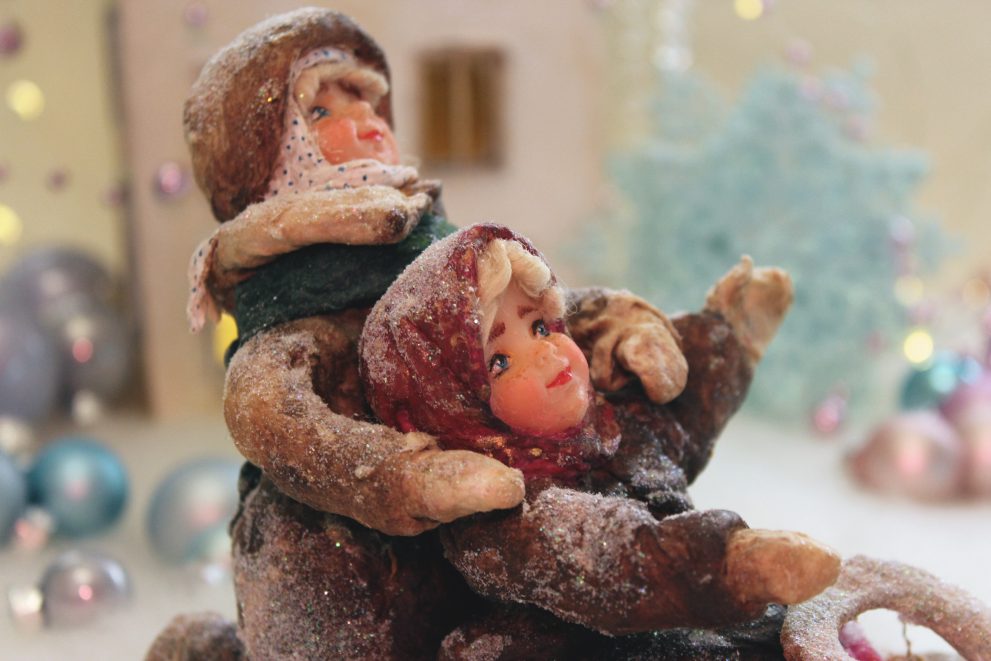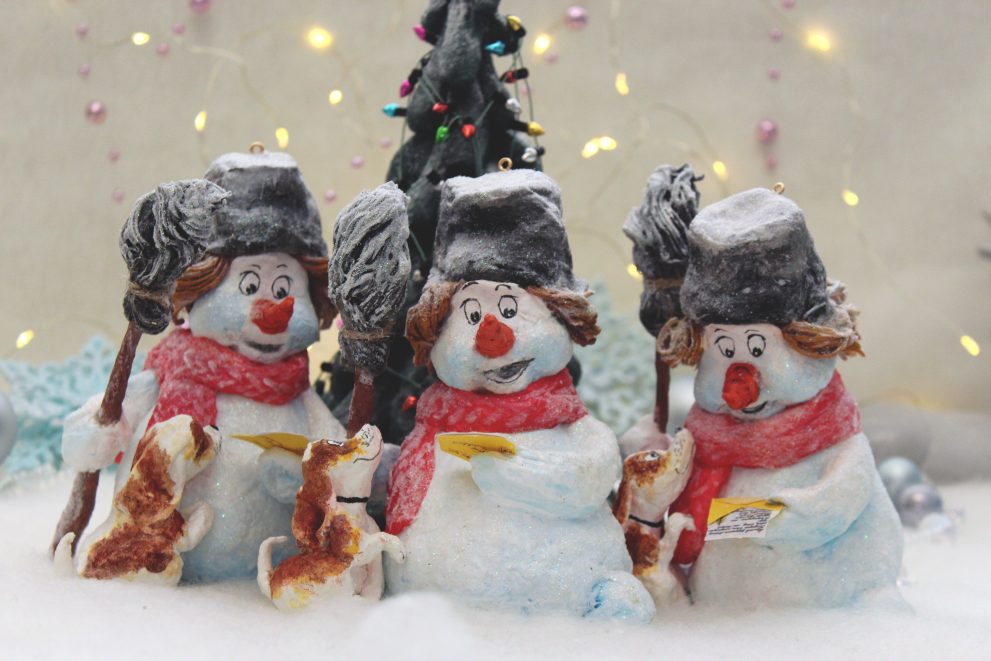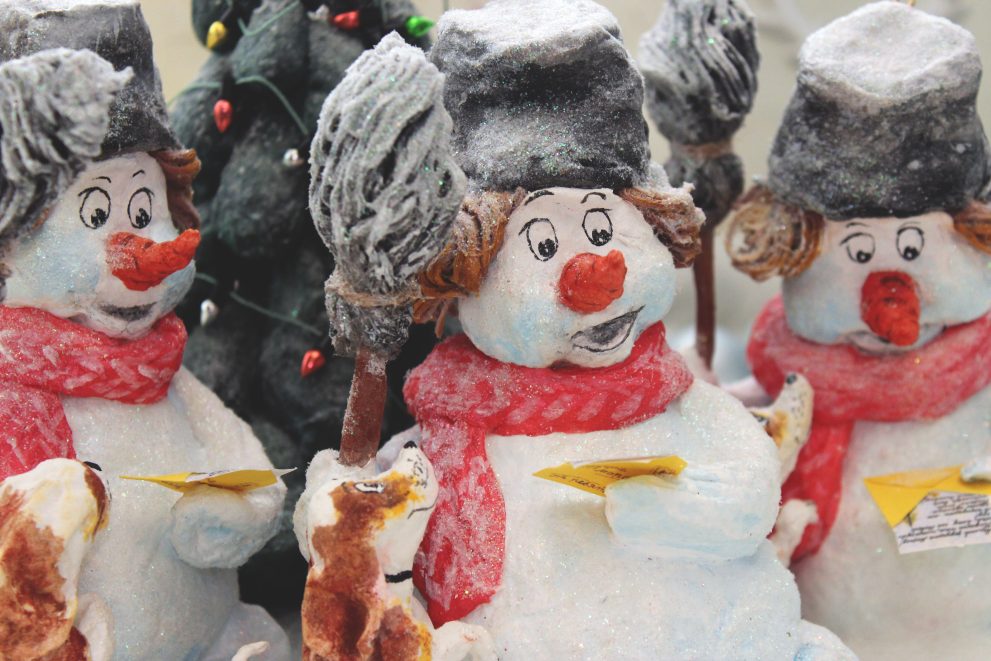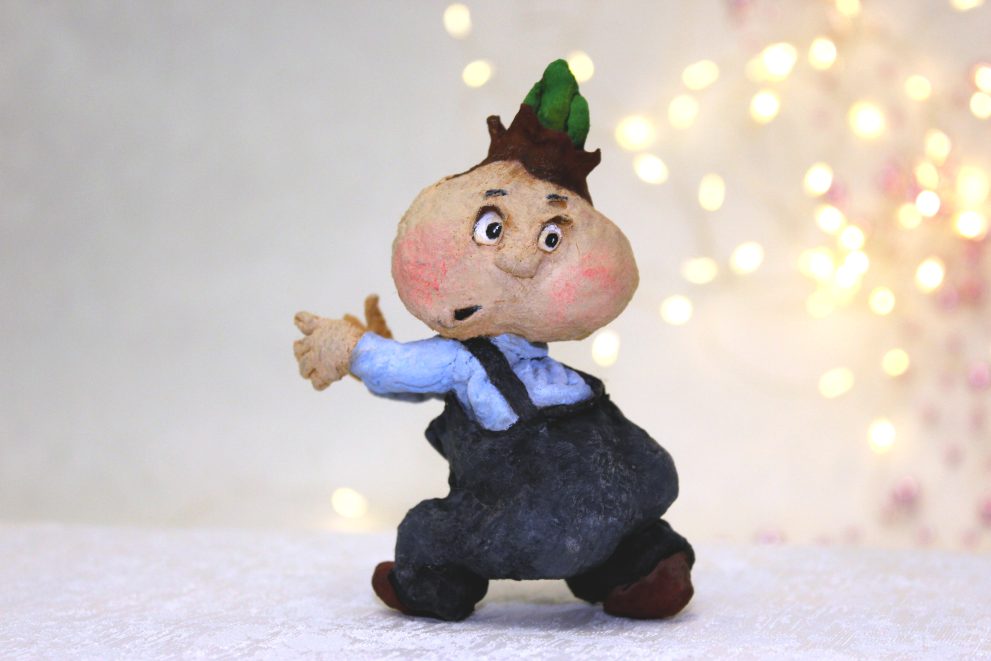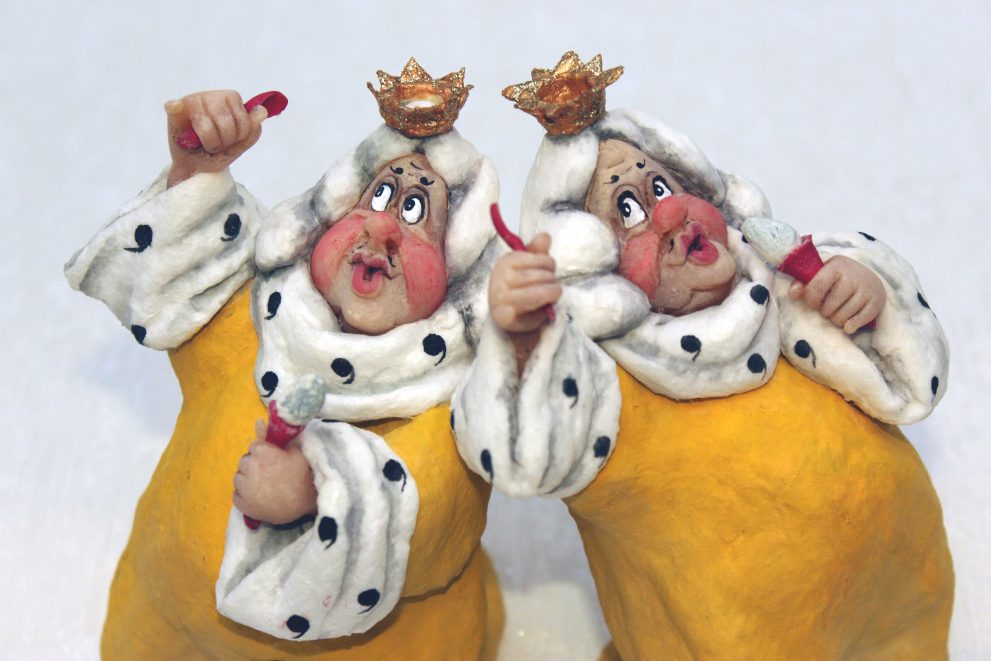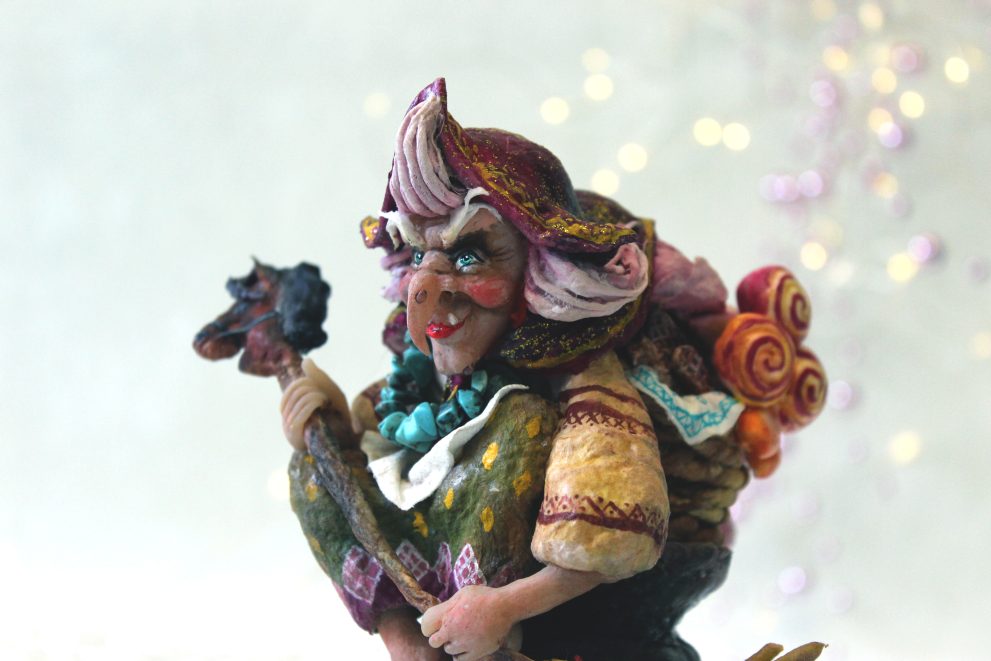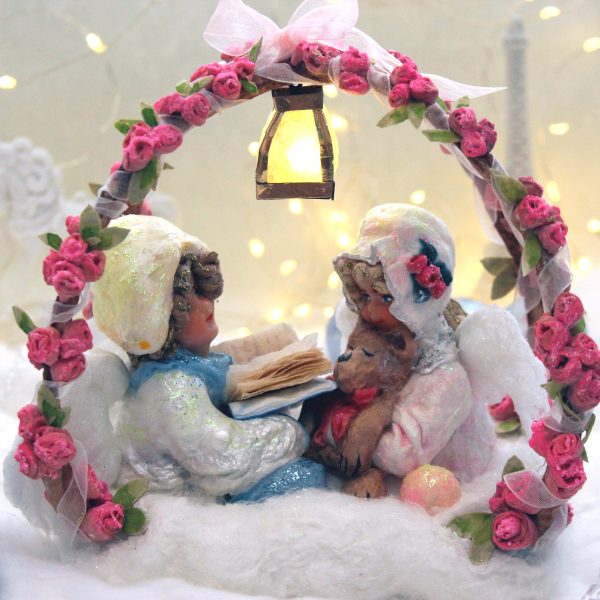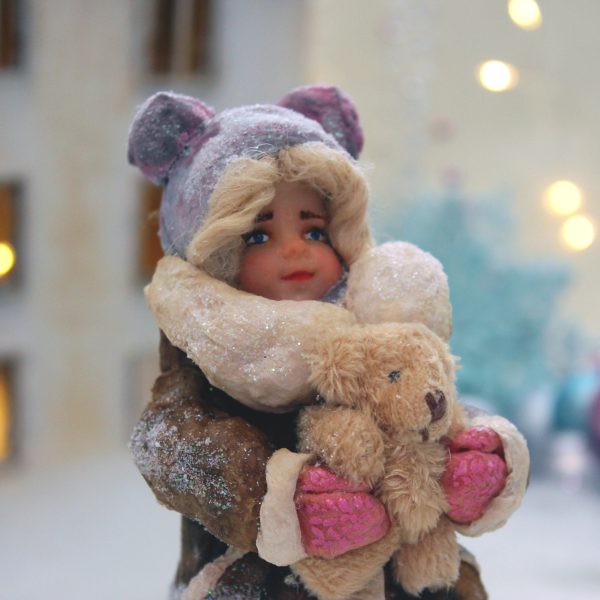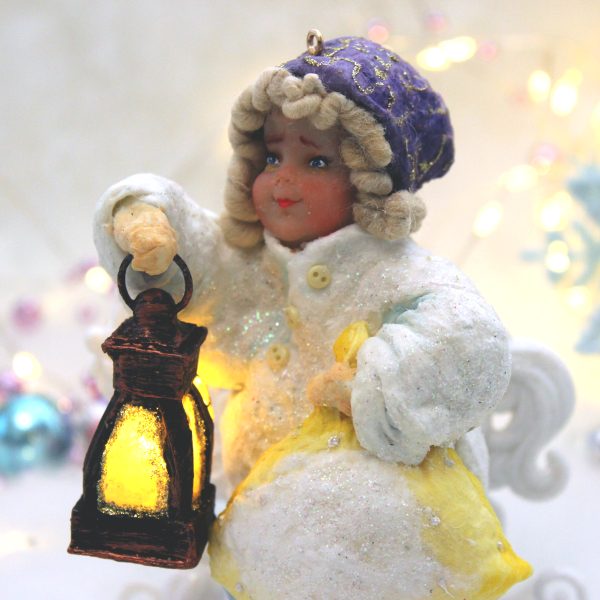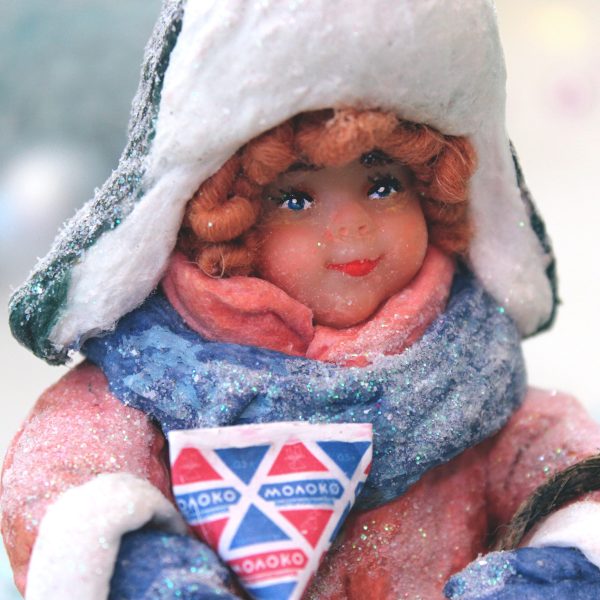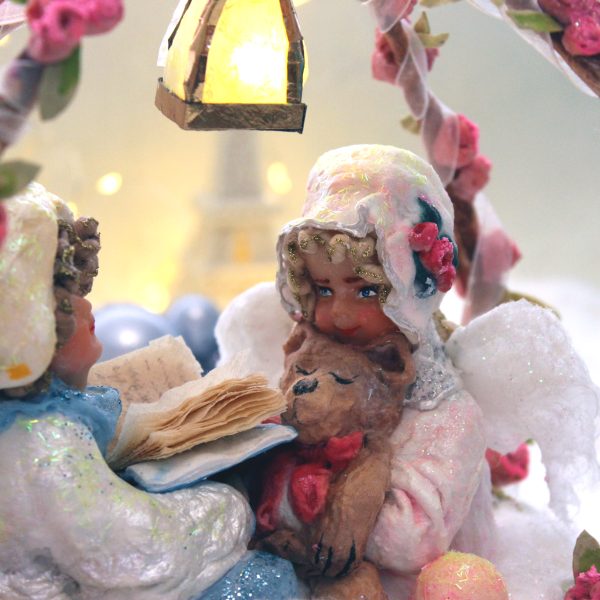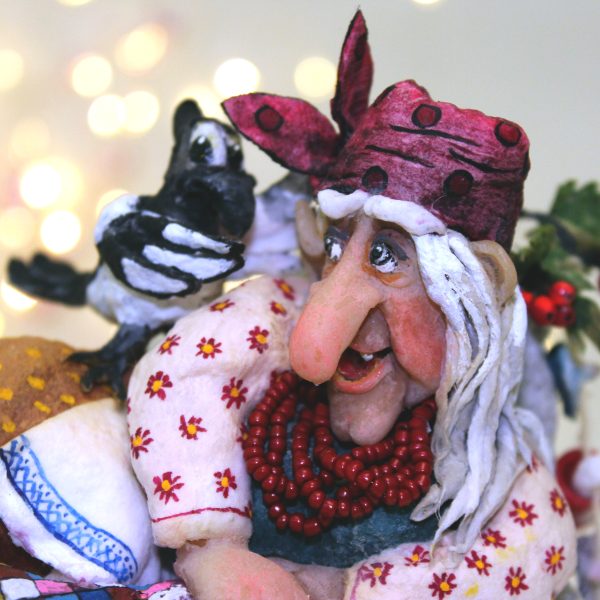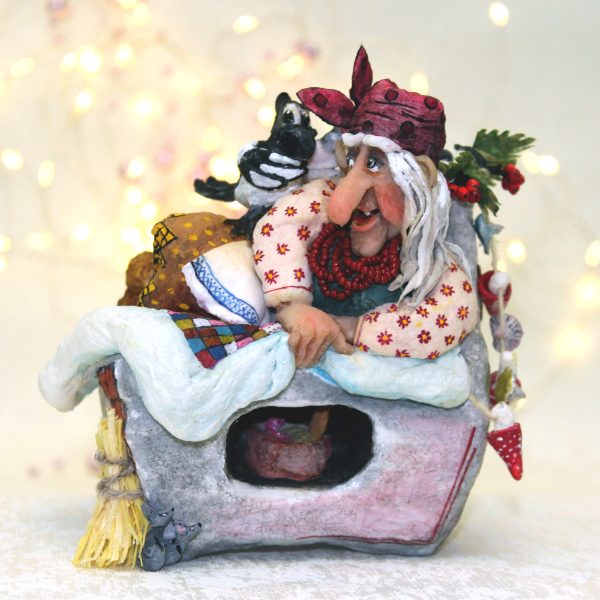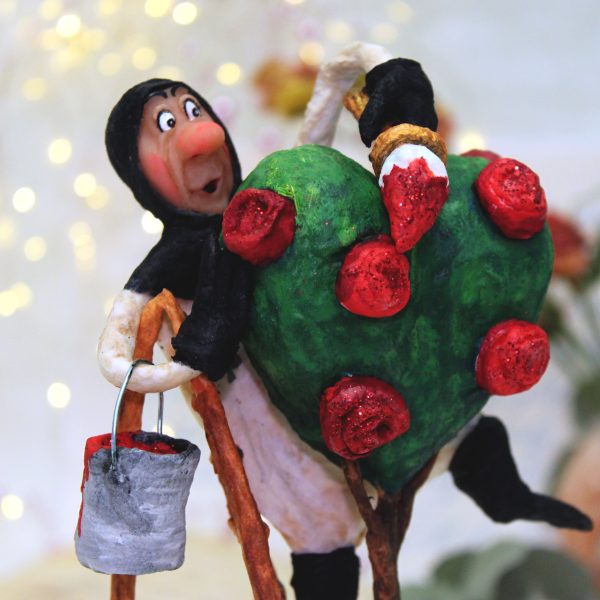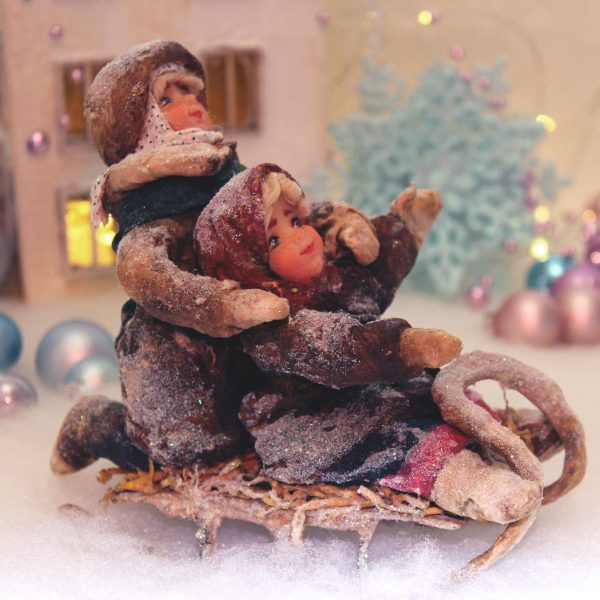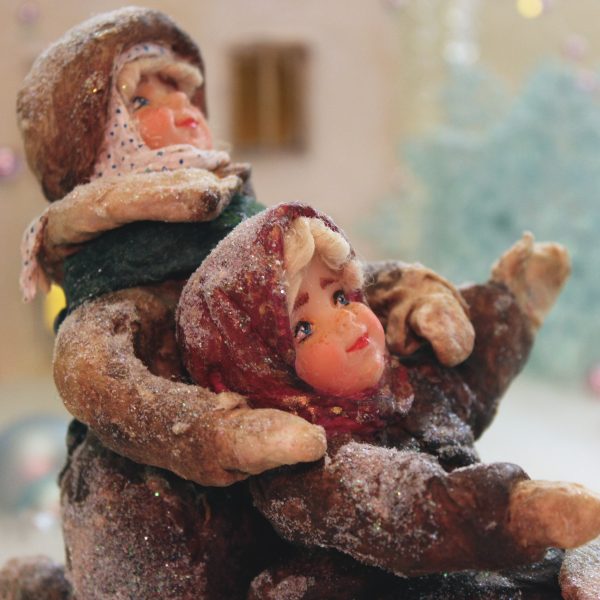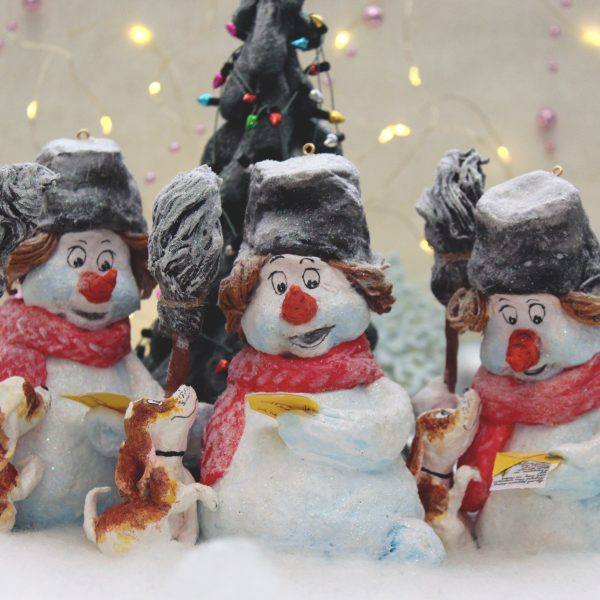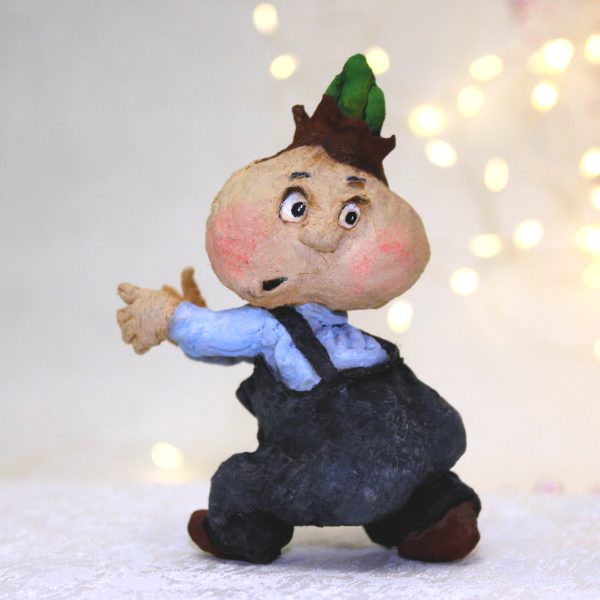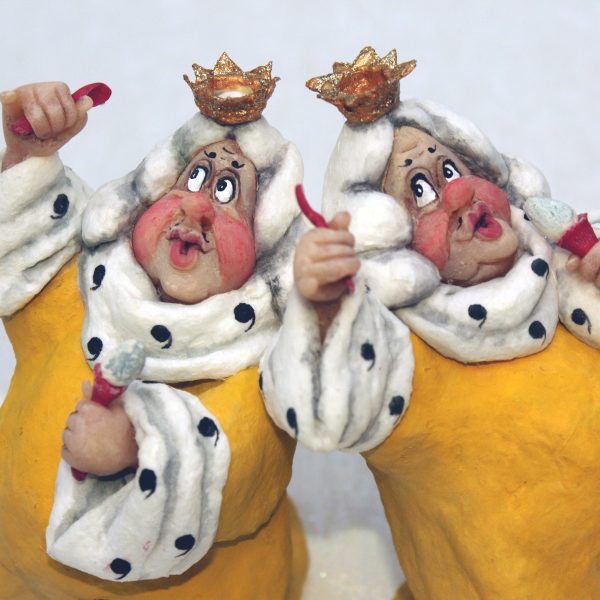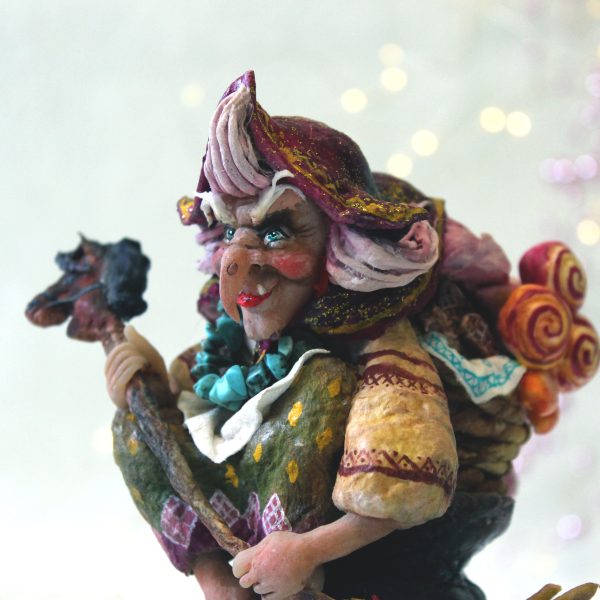Hello again!
Our names are Oksana and Vasily, and we are from Kostroma. Creating interior toys and items has become much more than just a hobby for us in recent years. It is fascinating in many ways: it’s intriguing to see materials transform into beautiful, bright, and sometimes mysterious objects, and it’s unusual to feel that sense when skills and craftsmanship give an interior toy a soul.
In short, what we do is try to bring paper and cardboard, cotton and plastic, clay and paste to life… And you know, it works! It happens quite naturally and can vary in size, from large interior toys the size of a person to small, custom Christmas tree toys of 5-10 centimeters. Some pieces take days, weeks, others months, but overall, we and our friends are happy with the results.
Our journey in creating interior toys began with simple crafts for kindergarten. Indeed, when our children actively participated with us in various competitions, we gradually realized: craftwork is interesting, captivating, and beautiful. Then, through hard work and spending a great deal of time studying everything related to interior toys, progress became visible.
Currently, our main focus is on custom cotton Christmas tree toys. Here are some key points about them.
When did the cotton toy appear?
The history of Russian Christmas tree toys begins in the mid-19th century. The first toys were German, but they were very expensive. As an alternative, cotton toys appeared, which could be made by hand.
Why choose a cotton toy as a gift?
The most important advantage of a cotton toy is its exclusivity. This craft is very popular today. Custom cotton toys are true works of art, making a set of them a unique, beautiful, and very warm gift.
What makes the cotton Christmas tree toy attractive as a collectible?
Even from one sample, it’s impossible to create two identical toys. They are as individual as the people who make them. This is why collecting cotton toys has become a popular hobby today.
What materials are used to make a cotton toy?
For creating a cotton toy, high-purity cotton and linen batting are used, along with starch paste, polymer clay, acrylic, oil, tempera, and watercolor paints. Additional materials can include wooden, glass, and metal fittings, natural wool, cotton lace, and others, depending on the composition.
